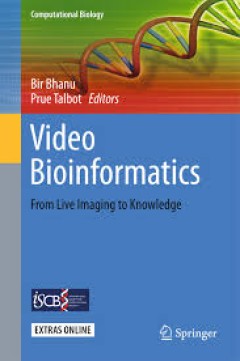Filter by

The psychobiology of down syndrome
This book covers recent research with neurobiological and cognitive features of Down syndrome. This book covers recent research with neurobiological and cognitive features of Down syndrome. There has been notable progress in understanding the psychobiological concomitants of Down syndrome. New data have pinpointed selective neurological defects, and recent research has revealed that it is possi…
- Edition
- -
- ISBN/ISSN
- 9780262315975
- Collation
- 1 online resource (496 pages).
- Series Title
- -
- Call Number
- -

Reproduction in context :social and environmental influences on reproductive …
"A Bradford Book.""Historically, reproductive science has focused on reproductive behaviors divorced from the contexts in which they occur. Taking a more integrated view, this book explores the neuroendocrine bases of reproduction in relation to their environmental and social contexts."--Jacket.OCLC-licensed vendor bibliographic record.
- Edition
- -
- ISBN/ISSN
- 9780262285681
- Collation
- 1 online resource (x, 520 pages) :illustrations
- Series Title
- -
- Call Number
- -

Where biology meets psychology :philosophical essays
"A Bradford Book."A great deal of interest and excitement surround the interface between the philosophy of biology and the philosophy of psychology, yet the area is neither well defined nor well represented in mainstream philosophical publications. This book is perhaps the first to open a dialogue between the two disciplines. Its aim is to broaden the traditional subject matter of the philosoph…
- Edition
- -
- ISBN/ISSN
- 9780262274944
- Collation
- 1 online resource (xii, 391 pages) :illustrations
- Series Title
- -
- Call Number
- -

Wavelets in Neuroscience
This book examines theoretical and applied aspects of wavelet analysis in neurophysics, describing in detail different practical applications of the wavelet theory in the areas of neurodynamics and neurophysiology and providing a review of fundamental work that has been carried out in these fields over the last decade. Chapters 1 and 2 introduce and review the relevant foundations of neuroph…
- Edition
- -
- ISBN/ISSN
- 978-3-662-43850-3
- Collation
- -
- Series Title
- -
- Call Number
- -

Volcanic Lakes
This book aims to give an overview on the present state of volcanic lake research, covering topics such as volcano monitoring, the chemistry, dynamics and degassing of acidic crater lakes, mass-energy-chemical-isotopic balance approaches, limnology and degassing of Nyos-type lakes, the impact on the human and natural environment, the eruption products and impact of crater lake breaching eruptio…
- Edition
- -
- ISBN/ISSN
- 978-3-642-36833-2
- Collation
- -
- Series Title
- -
- Call Number
- -

Viruses in Foods
Foodborne viruses are an important group of pathogens recognized to cause significant disease globally, in terms of both number of illnesses and severity of disease. Contamination of foods by enteric viruses, such as human norovirus and hepatitis A and E viruses, is a major concern to public health and food safety. Food Virology is a burgeoning field of emphasis for scientific research. Many de…
- Edition
- -
- ISBN/ISSN
- 978-3-319-30723-7
- Collation
- -
- Series Title
- -
- Call Number
- -

Video Bioinformatics From Live Imaging to Knowledge
The advances of live cell video imaging and high-throughput technologies for functional and chemical genomics provide unprecedented opportunities to understand how biological processes work in subcellular and multicellular systems. The interdisciplinary research field of Video Bioinformatics is defined by Bir Bhanu as the automated processing, analysis, understanding, data mining, visualizati…
- Edition
- -
- ISBN/ISSN
- 978-3-319-23724-4
- Collation
- -
- Series Title
- -
- Call Number
- -

Veterinary Mycology
This book is a comprehensive overview of the fungi that are clinically relevant for animals and humans. It is divided in three major parts: the first part comprises the history of veterinary and medical mycology, general aspects of morphology, growth, nutrition, reproduction and classification of fungi. In the second part, the etiologic agents of cutaneous, subcutaneous and systemic mycoses are…
- Edition
- -
- ISBN/ISSN
- 978-81-322-2280-4
- Collation
- -
- Series Title
- -
- Call Number
- -

Vertebrate Sound Production and Acoustic Communication
Although the fundamental principles of vocal production are well-understood, and are being increasingly applied by specialists to specific animal taxa, they stem originally from engineering research on the human voice. These origins create a double barrier to entry for biologists interested in understanding acoustic communication in their study species. The proposed volume aims to fill this gap…
- Edition
- -
- ISBN/ISSN
- 978-3-319-27721-9
- Collation
- -
- Series Title
- -
- Call Number
- -

Vertebrate Myogenesis Stem Cells and Precursors
This book addresses the differentiation control of skeletal muscle in different locations of the vertebrate body Particular attention is paid to novel regulatory molecules and signals as well as the heterogeneity of origin that have revealed a developmental overlap between skeletal and cardiac muscle. Different functional muscle groups are the product of the evolution of the vertebrate classes,…
- Edition
- -
- ISBN/ISSN
- 978-3-662-44608-9
- Collation
- -
- Series Title
- -
- Call Number
- -
 Computer Science, Information & General Works
Computer Science, Information & General Works  Philosophy & Psychology
Philosophy & Psychology  Religion
Religion  Social Sciences
Social Sciences  Language
Language  Pure Science
Pure Science  Applied Sciences
Applied Sciences  Art & Recreation
Art & Recreation  Literature
Literature  History & Geography
History & Geography